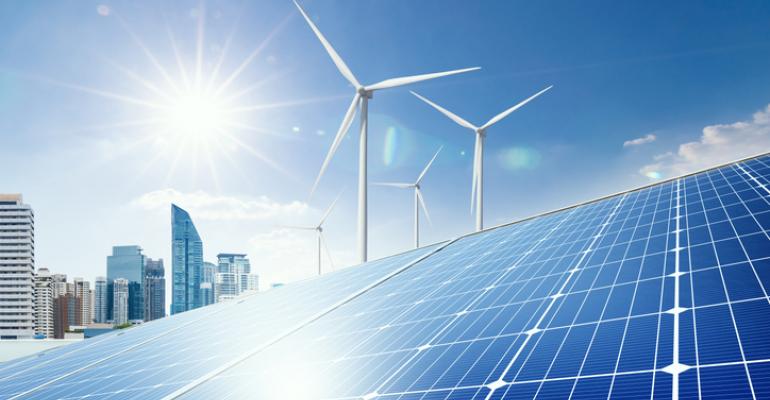An event venue’s power source has a notable effect on a meeting’s total carbon emissions. After all, a hotel that’s connected to a regional utility whose power is, say, 80 percent derived from fossil fuels produces significantly more carbon than a hotel whose regional utility uses 40 percent fossil fuels and 60 percent renewable sources such as solar, wind, hydro, and nuclear. Therefore, any measurement of carbon emissions from a meeting would have to take this into account.
For planners who want to include a venue’s power source in their site selection process, Julia Spangler, chief of sustainability consultancy Ecosystem Events, says that “the best source of information is the utility company connected to the venue. Some utilities are forthcoming about their power sources, called a resource mix or a generation portfolio (one example: AES Indiana Resource Mix), while others don't publicly publish it.”
In that case, there is another way for planners to get the resource mix and, in turn, a carbon-emissions figure for a host venue’s energy usage. The Environmental Protection Agency provides the percentages of fossil-fuel and renewable sources used by utilities on a state or regional basis. And California gets even more granular, with data for individual cities or multi-city utilities.
Here are two useful benchmarks: Overall, 61 percent of U.S. utility-scale electricity generation comes from burning coal, natural gas, and petroleum fuels, which accounts for 855 pounds of carbon emissions produced per megawatt hour. So, any meeting facility connected to a utility using a lower percentage of fossil fuels would produce less than 855 pounds of carbon per megawatt hour, and that number can be calculated.
Another factor to consider is whether the host facility generates any renewable power of its own. For instance, the Hotel Marcel in New Haven, Conn., has enough solar panels to power the entire building. Similarly, the Los Angeles Convention Center has a 2.2-megawatt solar array on its rooftop that generates 22 percent of the facility’s energy, while the 13 MGM resorts in Las Vegas, including Bellagio and Mandalay Bay, have a giant solar array in the desert that provides 90 percent of the daytime power needs.
“Honestly, this issue is going to come down to planners asking the facility’s management” for power-source and power-consumption data, says Aurora Dawn Benton, founder of sustainability consultancy Astrapto. “And the more that planners push for these figures, the more it will become standard for properties to include such information in proposals, marketing collateral, and other communications. Some are already doing this.”
One way to make it easier to find a property that tracks such data: Ask if the facility has the EPA’s Energy Star certification for energy efficiency. “A venue that tracks its power-consumption data for Energy Star compliance will have monthly usage numbers in front of them” that planners can use, says Drew Shula, CEO of sustainable-construction advisory firm Verdical Group. “You can see the property’s historical energy data and probably back out a ballpark number for how much energy your group used.” In addition, properties that achieve an LEED certification for overall resource efficiency are likely to have energy-usage data available.
Many times, getting that property-wide data is the best that meeting hosts can do before they try to calculate their events’ carbon emissions from power usage. “Unless the event takes over the building, emission calculations for specific parts of a building requires sophisticated sub-metering and building-management systems,” says Benton. If that’s not possible at a host property, calculating the percentage of the venue’s total space being used by the meeting and obtaining the property’s total megawatt hours used over the days of the event would allow a meeting host to produce an estimate.





